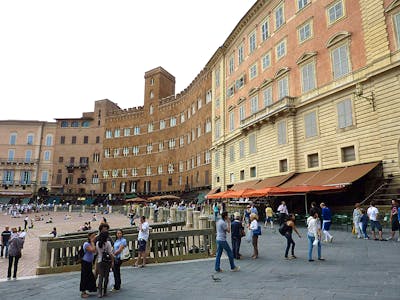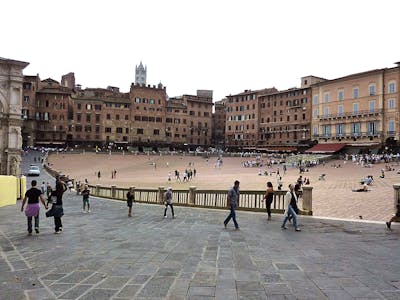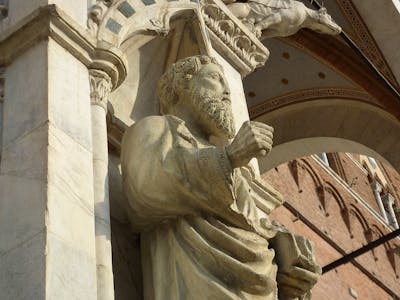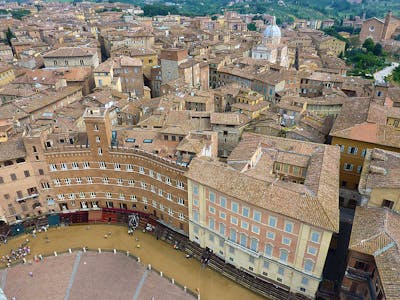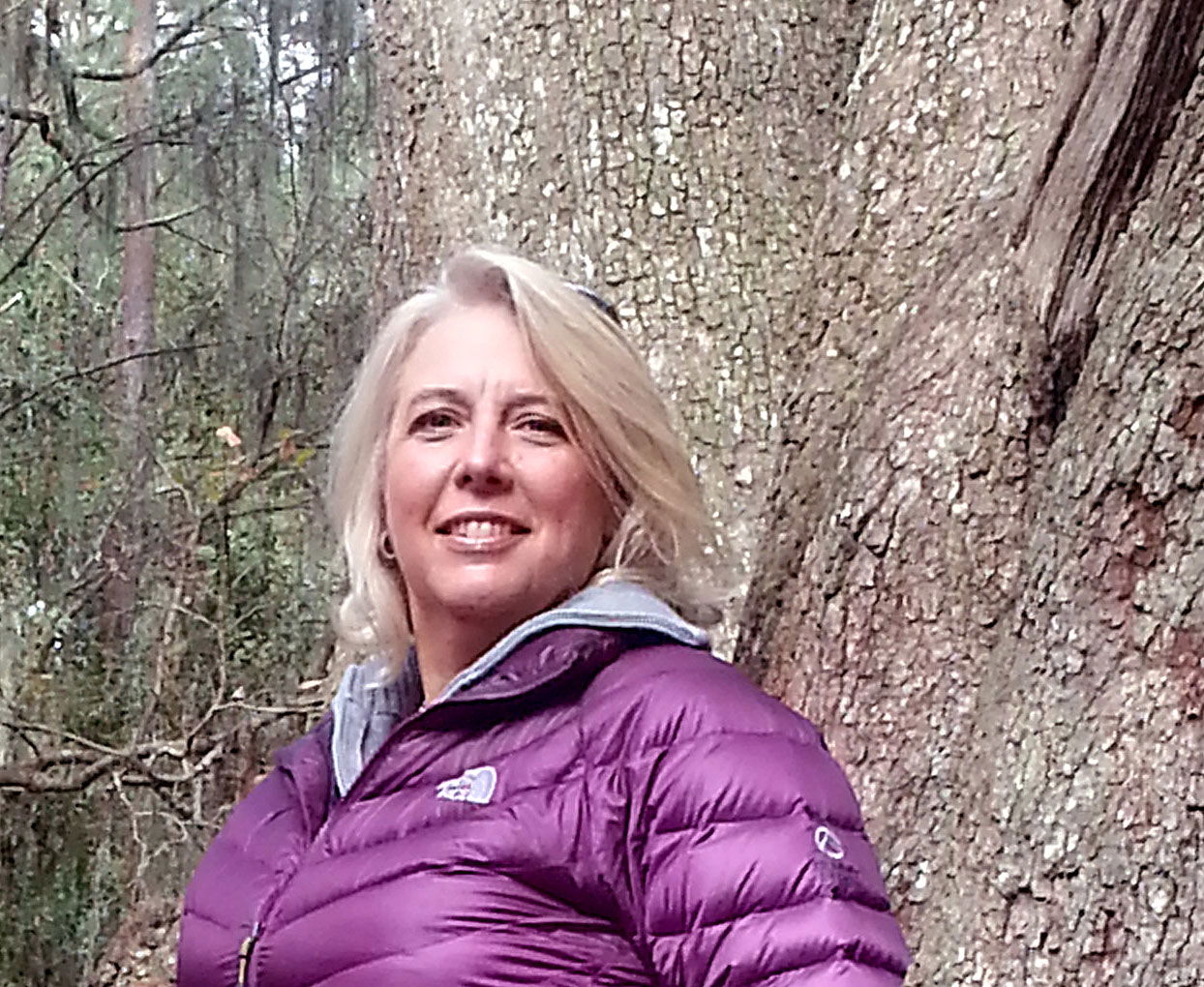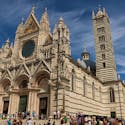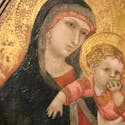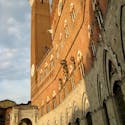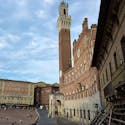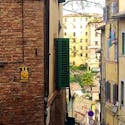The Heart & Soul of the City
A universal symbol of the city, the distinct formation of the Piazza del Campo is just one of the reasons why UNESCO recognizes Siena as the ideal embodiment of a medieval city. Built in the exact place where the three antique hilltop towns sloped together, before eventually combining to create the community of Siena.
The main square, commonly called “il Campo” was built on the intersection of the three main roads that lead to and from Siena, destined to be a neutral ground where political and civic holidays could be celebrated. The homogenous architectural form of the square and the buildings facing it was not an accidental happening; the government created guidelines in 1297, before the actual building of the square and civic buildings. If any structure didn’t adhere, then they were torn down - as was the antique church for St. Peter and Paul. This signifies that it was always the city leader's intention to create a harmonious structure between the buildings and the square.
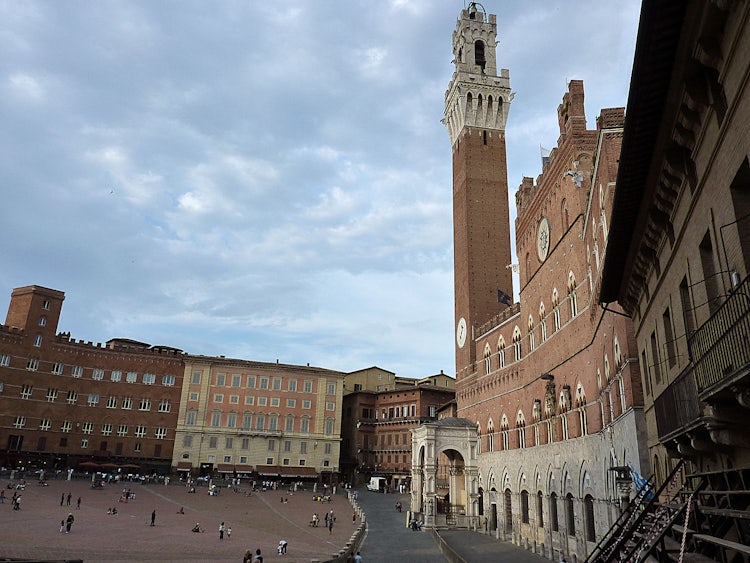
The Distinct Shape
The square, with a circumference of 333 meters, is paved with a fishtail design of red brick divided by 10 lines of white travertine stone creating a shell like appearance with 9 sections pointing directly to Palazzo Pubblico, the civic headquarters. Each section representing one of the ruling 9 governors in the “governo dei nove” and long considered to be one of the most stable and peaceful governments in Italy. Artistically speaking, the sections were to resemble the folds in the Virgin Mary’s cloak, who was not only the patron saint, but considered the “ultimate ruler” of Siena. Though some have suggested that the harmonic construction of the square is an artistic representation of the valley of Montone.

Siena at one time was equal in size to Paris, though after the ravages of the plague the population dropped dramatically and never truly returned to those glorious heights, not even today. Piazza del Campo was intended as an area where the entire population could meet for activities, games and political events - thus it was built to hold the entire town. There are no documents to support that all roads were eventually to lead to the square (thus the Palazzo Pubblico) however, when you walk through the four of the seven openings your eye is led directly to the civic building - whereas the remaining three invite you to admire the Tower.
Everything is Happening Here
Today the square still hosts major events, namely the Palio, activities around Carnival in February and in the summer the local government organizes many initiatives outside in the evening, under the stars. However during the day, it is a unique area where tourists come to sit, after walking the romantic streets of Siena, touring the Duomo and its many museums. Depending on the time of the day, they either sit in the warm sun or in the cool shadow of the Palazzo and the tower, admiring the tranquil and enduring beauty.
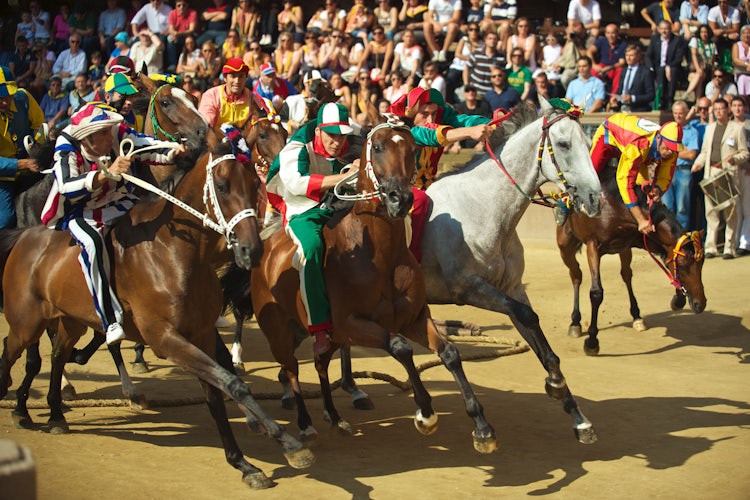
More to see in Piazza del Campo
Palazzo Pubblico
The home of the famous Government of Nine. The Palazzo Pubblico faces Piazzo del Campo - where the entire medieval population would meet for civic and cultural affairs and Piazza del Mercato is in the the back, one of the more important and oldest squares of Siena, built long before Piazza del Campo. The Palazzo Pubblico houses the Civic Museum with its many famous masterpieces of Sienese art.
Torre del Mangia
Looming over the square, the Torre del Mangia is 102 meters tall to the tip of the lightning rod. Constructed between 1325 to 1348, it is built of the typical terracotta colored brick and topped with in white travertine. The picturesque name is said to come from Giovanni di Balduccio, called 'il mangiaguadagni', who would often squander his earnings at the table.

Cappella di Piazza
At the base of the Torre del Mangia, is the Piazza Chapel built between 1352 to 1376 in honor of the Virgin Mary (La Madonna) thanking her for the escape from the effects of the “Black Plague” of 1348. The vaulted ceiling is supported by 4 pilasters which are decorated with images of saints by local artists of the time. During the Palio games, the mass for the jockeys is held at its altar.
Fonte Gaia
Directly opposite of the Palazzo Pubblico and the Torre del Mangia, the Fonte Gaia was the pride and joy of Siena built in 1346. The evocative marble carvings that you see today are copies rendered by Tito Sarrocchi of the original commissioned in 1409 by Jacopo della Quercia. The original sculptures and bas reliefs are visitable at the museum of Spedale di Santa Maria della Scala. Fed by underground tunnels that extend over 30 km, bring necessary water into the city center.
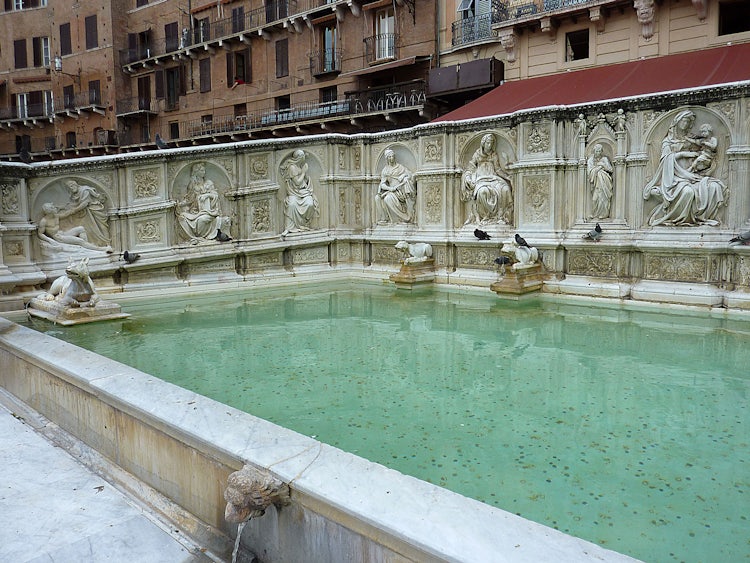
After the Square
If we can consider the Piazza del Campo the stage for the civic and political life in Siena, then its counterpart would be the Duomo, the center stage for the religious activities. Follow the signs as you exit the square and make your way over to the cathedral, another must see in Siena. Not only did the main square benefited from the forsight of the laws and regulations for construction, but so did the entire city; note the uniform facades, the detailed urban construction (precise and decisive) and the elegant lines that characterize the roads that lead towards the Duomo of Siena.
